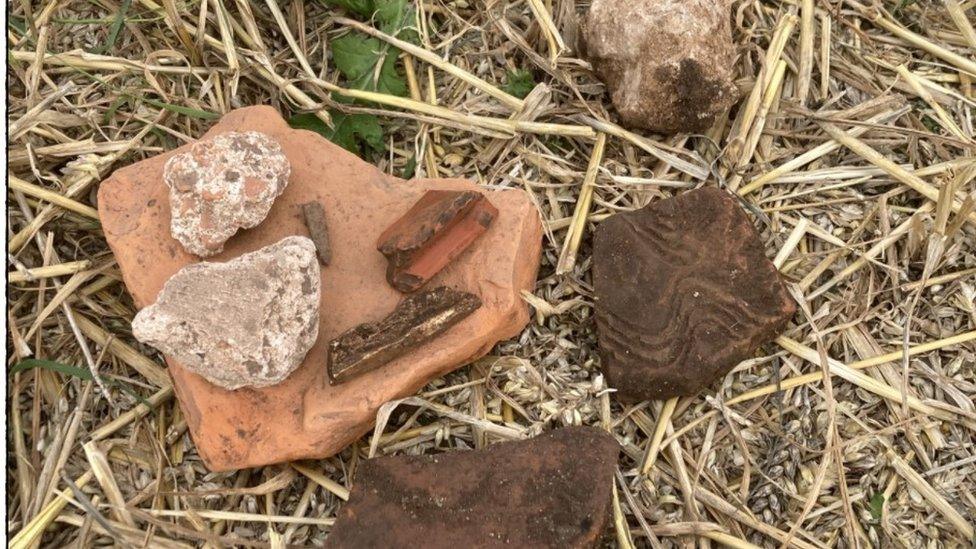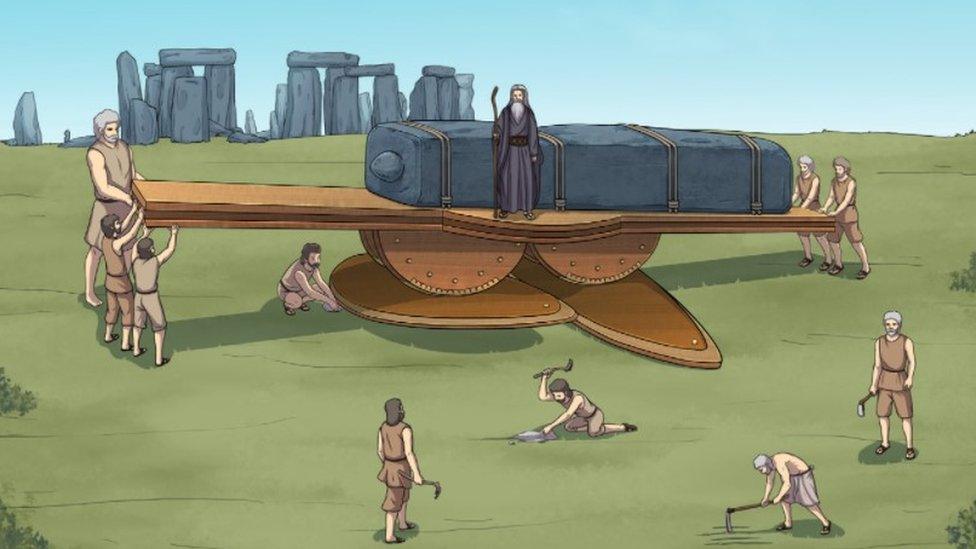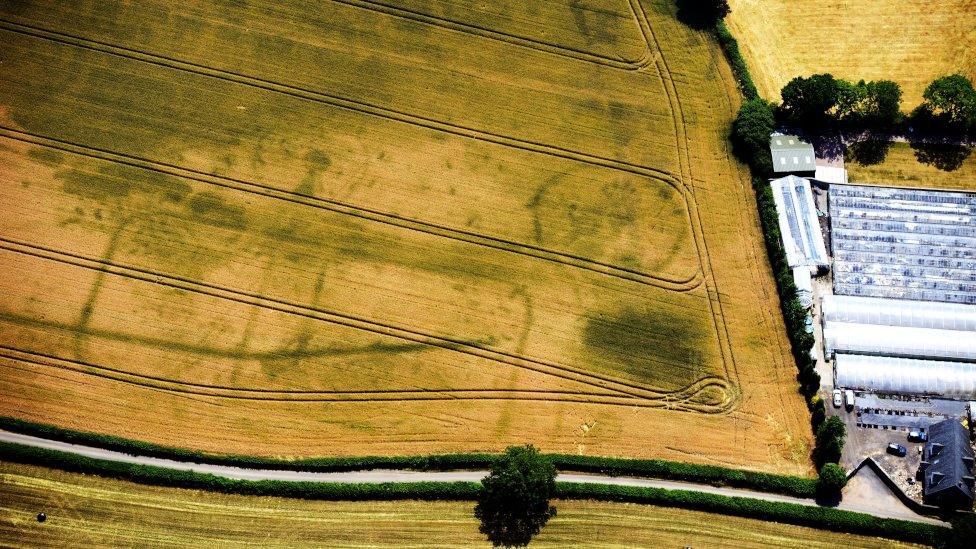Rossett Roman villa archaeological dig gets under way
- Published

Pottery and bricks have already been uncovered at the start of a three-week dig
A three-week archaeological dig has begun after the remains of a Roman villa were discovered on farmland.
It is taking place near Wrexham after a metal detectorist unearthed a number of Roman-era items.
"It's the first structurally-identified Roman villa in north-east Wales," said Dr Caroline Pudney from Chester University, who is leading the dig.
"It has the potential to change our understanding of the rural landscape in this area."
Since then, scans of the ground, near the village of Rossett, have revealed where the remains of several buildings can be found.
On Thursday, archaeologists began scraping back the earth to see what other treasures and clues to our Roman past might be found.
"Villas in Roman Britain tend to be working farms but they tend to be attached to quite high-status domestic buildings so people are not living in the traditional Iron Age round houses," Dr Pudney said.
"They're choosing to live in a more Romanised style of architecture."

The area will be dug using machines and by hand and the excavation will be led by Dr Caroline Pudney
Items of pottery, brick, tile and plasterwork already found around the site suggest the building might date from the second to fourth centuries.
"So, you are looking at potentially 200 years worth of occupation here - it's a few generations of families potentially farming this site," said Dr Pudney.
The aim is to explore as many of the "room" areas as possible because that is where further items, such as food remains, jewellery and pottery, are most likely to be discovered, offering the best evidence of how people in the area lived at the time.
An open day is planned for 18 September so people can visit and see what has been discovered.
Related topics
- Published6 July 2021

- Published7 June 2020
